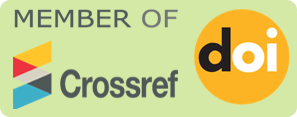ANALYTICAL STUDY OF INSTAGRAM AS AN AI-BASED DIGITAL MARKETING MEDIA COMMUNICATION TOOL IN THE TAJUR KATINEUNG NATURAL TOURISM SECTOR, PURWAKARTA, WEST JAVA
DOI:
https://doi.org/10.62567/micjo.v2i3.1173Keywords:
Digital marketing, Instagram, artificial intelligence (AI), media communication, tourism, Tajur KatineungAbstract
This study aims to analyze the role of Instagram as a digital marketing communication medium in promoting the Tajur Katineung natural tourist attraction, and to identify the application of artificial intelligence (AI) in supporting this marketing strategy. The method used is descriptive qualitative with a case study approach. Data were collected through direct observation of the Instagram account @tajurkatineung, digital insight documentation, and literature studies related to digital marketing, social media, and AI. The results show that Instagram has a strategic role in increasing the visibility and appeal of Tajur Katineung through its feed, story, and reels features. However, its utilization is still less than optimal in terms of content strategy, branding consistency, and audience engagement. AI technology is considered to have great potential in analyzing audience behavior and content effectiveness in real-time. Unfortunately, the use of AI is still very limited due to the lack of digital literacy among managers. From a media communication perspective, the @tajurkatineung account shows potential as a two-way media that allows direct interaction with the audience and forms a positive perception of the local tourist destination. This study recommends increasing the digital capacity of managers through training in the use of AI and content strategy, as well as collaboration with influencers and the use of Instagram Ads. This research provides theoretical contributions to the study of digital communication and social media-based marketing, as well as practical benefits for tourism actors in optimizing destination promotion strategies with the support of digital technology.
Downloads
References
Baran, S. J., & Davis, D. K. (2012). Mass Communication Theory: Foundations, Ferment, and Future (6th ed.). Wadsworth Publishing.
Chaffey, D. (2019). Digital Marketing: Strategy, Implementation, and Practice (7th ed.). Pearson Education.
Kotler, P., & Keller, K. L. (2016). Marketing Management (15th ed.). Pearson Education Limited.
Littlejohn, S. W., & Foss, K. A. (2009). Encyclopedia of Communication Theory. Sage Publications.
Kaplan, A. M., & Haenlein, M. (2010). Users of the world, unite! The challenges and opportunities of Social Media. Business Horizons, 53(1), 59–68. https://doi.org/10.1016/j.bushor.2009.09.003
Kementerian Pariwisata dan Ekonomi Kreatif. (2022). Laporan Statistik Pariwisata Indonesia. Jakarta: Kemenparekraf.
McQuail, D. (2010). McQuail's Mass Communication Theory (6th ed.). Sage Publications.
Huang, M.-H., & Rust, R. T. (2021). Artificial Intelligence in Service. Journal of Service Research, 24(1), 3–20. https://doi.org/10.1177/1094670520902266
Rakhmat, J. (2005). Psikologi Komunikasi. Remaja Rosdakarya.
Statista. (2023). Number of Instagram users worldwide from 2019 to 2023. Retrieved from https://www.statista.com/
Severin, W. J., & Tankard, J. W. (2001). Communication Theories: Origins, Methods and Uses in the Mass Media (5th ed.). Longman.
Sugiyono. (2019). Metode Penelitian Kuantitatif, Kualitatif, dan R&D. Bandung: Alfabeta.
Tuten, T. L., & Solomon, M. R. (2018). Social Media Marketing (3rd ed.). SAGE Publications.
Kementerian Pariwisata dan Ekonomi Kreatif. (2022). Laporan Statistik Pariwisata Indonesia. Jakarta: Kemenparekraf.
Downloads
Published
How to Cite
Issue
Section
License
Copyright (c) 2025 Yuyun Yuniarsih, Nunung Sanusi, Abyan Faliq Athallah, Rafly Ramadhany

This work is licensed under a Creative Commons Attribution-ShareAlike 4.0 International License.



























